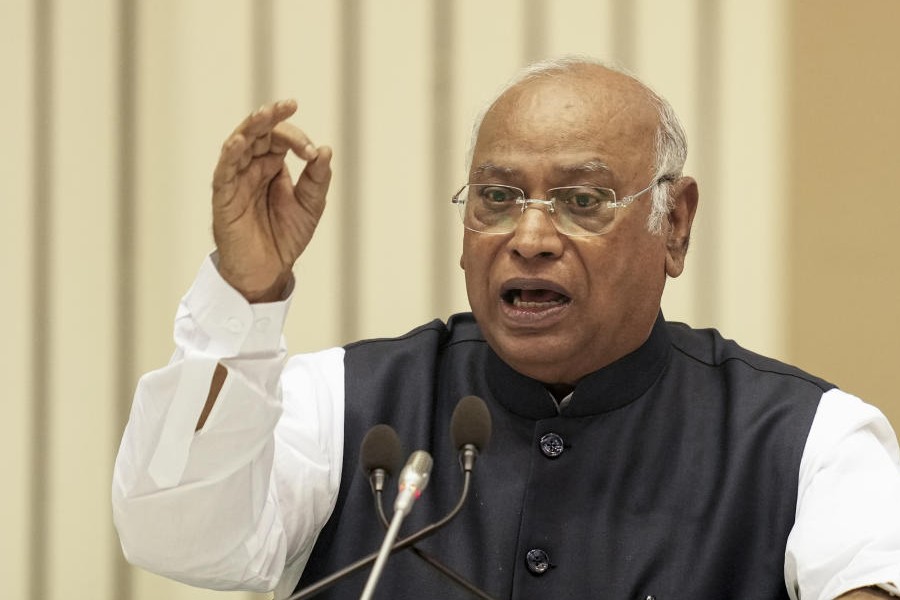|
|
Unlike the United States of America and countries in Europe, including the United Kingdom, there has been little debate in India about the series (five so far, counting the petroleum-product price reductions) of stimulus packages announced by our dream-team of economic policymakers: Manmohan Singh, Montek Singh Ahluwalia, P. Chidambaram and now Pranab Mukherjee. India’s fiscal deficit has been serially under-reported for the last years of the United Progressive Alliance government. “Below the line” items were excluded, like oil bonds, farmer loan write-offs, or bonds to other public sector undertakings distributing subsidized goods. Against the standby finance minister’s estimate of a fiscal deficit of six per cent for the last year (versus the incredible 2.5 per cent budgeted by his predecessor), many economists expect that it would be 10 per cent. Even the chairman of the prime minister’s economic advisory council expects it to have been eight per cent. Adding the ceiling of deficit allowed to state governments of 3.5 per cent, overall deficit would be between 11.5 to 13.5 per cent, higher than it was when the P.V. Narasimha Rao government introduced reforms in 1991. No wonder Standard & Poor are ready to downgrade India. Some say that even the US has a deficit of 12 per cent. The US is the world’s largest economy, in which countries want to invest their savings. This keeps the dollar strong and enables American consumers to splurge on the savings of other countries.
In the past, high deficits have resulted in inflation and considerable government indebtedness, especially to foreign lenders. With a declining economy, prices are on a downward trend and inflation is not our worry for the next year. But the government has to find lenders during a global meltdown.
Any economic revival package should curtail wasteful expenditures. Thus, the member of parliament local area development (MPLAD) scheme could have been suspended, saving many crores. Instead, the amount per MP is now to be increased to five crore rupees each. There was no economic sense in raising dearness allowances for government employees when prices are falling. But there is election sense in offering bribes to the population of government employees just before the elections. Many subsidies could have been cut, to start with, on gas cylinders and fertilizers that go to the well-to-do and largely urban consumer and the better-off peasant. The huge waste in the distribution of cheap foodgrain and kerosene, when many deserving poor do not get them and better-off people do, is known. During revival, waste and bad targeting must be curbed.
In the US, there are debates and opposing views on what should be done to bring the country out of the recession. Barack Obama unveiled a plan to bring the present 12 per cent deficit down to three per cent by the end of his administration. Republicans, having created these huge deficits by tax cuts and lavish expenditures, want Obama to give more tax cuts and reduce government expenditures. Economists, like Paul Krugman, and the Democratic Party would like to see more expenditure and fewer tax cuts.
In the UK, there is little agreement as to whether the bank bailouts and the support to continued lending with government guarantees are enough to revive consumer and investment expenditures. Germany is still in doubt as to what it should do; this export-oriented country is experiencing a steep fall in exports. Europe is wondering what to do about its recent entrants, from Eastern Europe and about Ireland. There is debate on how to bring down their deficits and make them adhere to the rules laid down for the European Union. There is no debate on specifics by any Indian politician or economist on the stimulus packages.
Indian estimates of the gross domestic product are dropping almost every month. The confident 7.1 per cent estimated for 2008-09 is already expected to be six per cent and perhaps five per cent in 2009-10. Agriculture is estimated to have grown last year by much less than expected. If the monsoon is weak, the effect on GDP will be drastic. Services include a tremendous boost by 17 per cent to government services because of the Pay Commission awards, hardly an addition to GDP. Industrial production has dropped for the fourth month in succession and is expected to continue downward. Layoffs have affected white-collar workers (information technology, business processes outsourcing, print and visual media, entertainment, restaurants, hotels), factory workers (garments, automobiles, steel, aluminum, tyres, automotive components), and an unknown number of small-scale industries. This must be having multiplier effects on the employment of casual labour. Only rural India and agriculture have not been affected.
India has a Fiscal Responsibility Act. The UPA’s finance minister blithely fudged the figures to prove that the UPA was achieving the targets, though it was not. The deficit includes wasteful expenditures and the nation will pay a heavy price while reducing it in coming years.
Agriculture has had declining government investment for years. Government spending on agriculture is ephemeral, not building assets, merely short-term and not production oriented (on fertilizer subsidies, free or cheap power and water, write-offs of loans to farmers). There has been no attempt for many years to build rural assets that could help agricultural production and diversify rural employment.
The national rural employment guarantee scheme has been poorly implemented in most places, with only a part of the money actually being received as wages, and without the work adding to rural assets. Even then it has helped, but properly implemented, it could have done wonders for rural India.
The revival package has vast sums for infrastructure but it is unlikely that the amounts will be spent and that the assets will be built well. For example, the national highway programme started by the National Democratic Alliance government was then a great stimulus to the economy and to industries like cement and steel. It is now mired in corruption, bureaucracy, controversy and lack of progress.
Banks have lost confidence in borrowers. Even Tata Motors has to approach the market for fixed deposits (given up by good companies for the last many years). Many cannot get bank funds. Borrowers, both households and industry, have also lost confidence. Households are unsure about jobs, industries about their ability to repay. Our administrative incapability to spend vast sums honestly and efficiently raise doubts about revival packages’ ability to revive the economy.
Instead, we must increase purchasing power of the people. Tax cuts and price reductions can do this, as the automotive industry has shown since January, when sales rose after cuts in excise duties. Further direct and indirect tax cuts would help. We must also make banks lend money. Merely cutting interest rates will not revive the economy if banks do not lend even to existing borrowers. Lending must resume to small and cottage industries as well. What would help is a safety net by the government to assure banks that in case the borrowers default, the government will protect them, provided adequate diligence about the payment record of the borrower has been practised.
A third element in confidence-building would be the protection of expenditures of those laid off, both among white- and blue-collar workers. A monthly payment related to the last drawn wage to help them meet household, education and health expenses, and subject to repayment when they have jobs again, would transform the situation.
The government should also be putting funds into infrastructure, health, education, but only to the extent that the money can be efficiently spent. Elections make this unlikely, and revival will be due to entrepreneurship, not government action.











